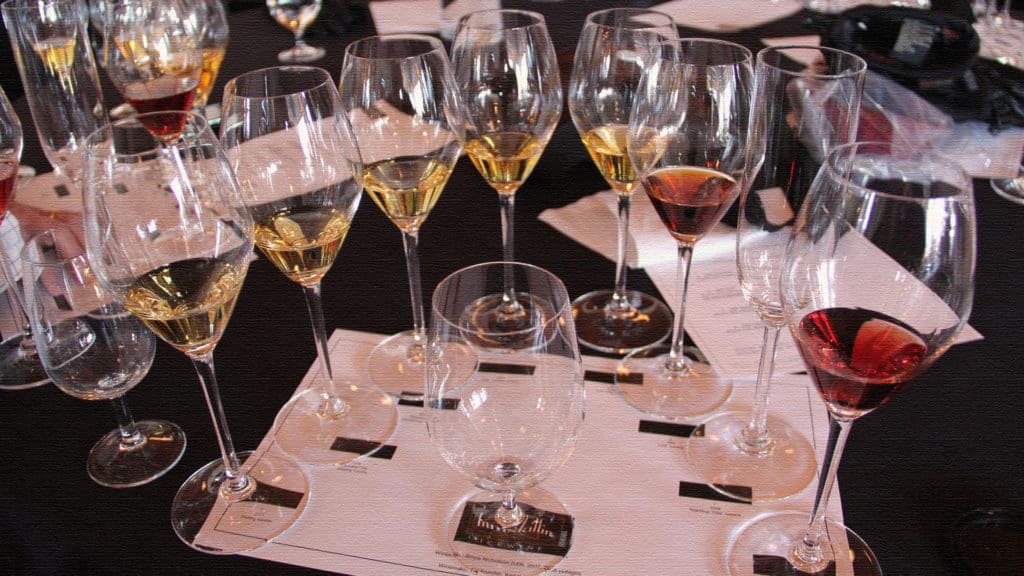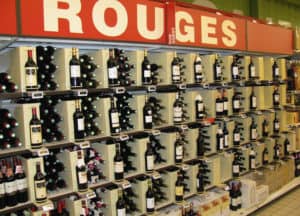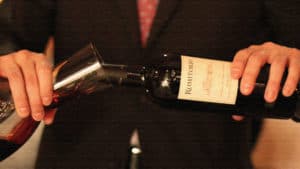Practically the whole wine industry uses samples to make sales. I mean the logic is simple. How can they commit to buying the wine if they haven’t tried it, right? I’ve always had a bit of a problem with this because it is a stroll down a dead-end street. All the buyer needs to do is say they don’t like the wine and your sale is deader than disco.

Therefore, I believe this product-centric, sample-centric style is a terrible way to sell wine. In fact, I’m against anything that smells like a “transactional” approach. So, allowing the sample to be the fulcrum on which the sale turns is a bit of a trap. A better way is to step back from the product and transaction itself and look at the larger relationship that is in play. The results is you can let the sample play a different role in the process. It should be merely the final confirmation in a tying-it-all-up-in-a-bow kind of way. Allow the sale to be a byproduct of a much larger relationship.
PRODUCT-CENTRIC SELLING PUTS YOU IN A PRICE WAR
Now, here’s one of the problems in utilizing a product-centric approach to selling (as opposed to an adding business value approach). It can and typically does rapidly devolve into a simple matter of PRICE. Your Chardonnay is not so unique that the restaurant needs to carry it. There are probably HUNDREDS of Chardonnays just as good at the same price. The snare that you’ve tripped is now the buyer’s decision will very quickly come down to who has the best price.
So, what’s the alternative? Strive to have the sale be a byproduct of a much larger relationship. One built on elements such as service and dependability and trust.
WHAT IT REALLY TAKES TO MAKE A SALE
When I first started selling wine to national restaurant chains in the early 90’s, I quickly learned that what the chain buyers cared more about than anything else was receiving the goods at the quotes price and not running out of stock. The truth is no national accounts buyer ever laid awake at night fretting over their inability to find a good Chardonnay to pour by the glass. Rather, the primary cause of their insomnia was the daunting task of finding a wine supplier who was CAPABLE of servicing all the store across the US. THAT was the big “selling opportunity.” So, the key to selling more wine to the on-premise chains was demonstrating your ability to manage the supply chain. Not very sexy, but man-o-man was it effective. By putting the focus on the buyer’s needs, it was possible to gain a competitive advantage.
I submit to you this is ALSO TRUE of independent restaurants. If you’ve ever been in a buyer role in a restaurant, you know what a total pain the ass it is to chase down wine sales reps to remedy pricing problems or out of stock situations. As I reflect on MY days as a wine buyer for restaurants, I recall giving most of my business to the most dependable and trustworthy sales reps. It was a no-brainer.
YOUR SAMPLE BAG IS BULGING
After I had a few times, I got smarter. I asked better questions. When wine sales reps came in with their bulging sample bags, I was like, “Now, before you take out any samples from that bag, tell me what you plan to do to guarantee me I won’t run out of stock if I start pouring one of your wines by the glass?” Most sales reps came at me with one thing in mind: to sell me whatever wine was on their quota sheet for that month. But I had a problem. My problem was I didn’t like to have my precious time wasted chasing sales reps to remedy service issues. My problem WASN’T trying to find good wines to service in my restaurant. You see the point? Most wine sales reps were trying to solve a problem I didn’t have.
SOLVE THE BUYERS PROBLEM, NOT YOUR OWN
Years later, when I started selling wine to restaurants, I remembered this lesson. I carried this attitude and perspective into every buyer-seller relationship. By solving the BUYERS problem (instead of my own) it made all the difference. What an irony! In order to solve my own problem (pressure to make my quota) all I had to do was shift my focus to the buyers’ problems. As a result, I made my quota every month.
SERVICE TRUMPS WINE KNOWLEDGE 7 DAYS A WEEK
What we are talking about here is a MINDSET. You can sell anything you want in life if you help enough people get what they want. Your focus needs to be on the customer’s needs and their motivation to buy. In order to do that, you must put yourself in their shoes. Look at the wine-buying/wine-selling world through their lens.
This is how you develop the ability to sell without samples. It takes a long time to prove you are dependable. But, once you’ve achieved that reputation, it’s not unusual at all for a buyer to place an order for a new product WITHOUT SAMPLING. You see, TRUST, is the most important attribute of a great wine salesperson. Not wine knowledge. Not wine quality. Wine quality is assumed. It’s a given. After all, you would not try to sell crap wine to your best customers, would you?
YOU BEFORE ME
I’ve sold LOTS of wine over the years without a sample. Not every time, of course. But MANY times. And the reason I was able to do it was I consistently put the buyers needs before my own. I made service and dependability and trust the “currency” of my business relationships. So, when I told a buyer, “This is a great Chardonnay for the price and your customers will love it. AND I promise to always ship it at the quoted price and NEVER run out of stock.” “Send me three cases, then,” was almost always the response.
In many cases, all I had to do was wait for my competitors to screw up. Let THEM run out of stock (or be hard to reach or slow to respond). As a result, over time, more and more of my competitor’s business would shift over to me because I was dependable and kept my promises. “You, Mr. Customer, come before me. Every time.”
MAKE YOUR SAMPLES COUNT
The funny thing is, when you learn how to sell without samples, on those rare occasions when you DO show up with a bottle in hand (preferably just one), the buyer tends to take you a lot more seriously. “Oh, he brought in a sample. This must be something really special.” What a refreshing departure from the here’s-eight-wines-pick-one fiasco. Any idiot can pull a bunch of samples and put them in front of a buyer. But, it takes a special kind of person with a servant’s heart to become a true professional. Which one are you?




